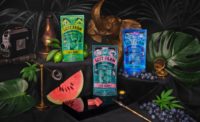THOUGHT LEADERSHIP
Communicate to Ensure Quality
Proud of your new product? Set and communicate benchmarks to ensure quality on the factory floor

Adobe Stock image / courtesy of Seaton Food Consultants

Nancy Jo Seaton, owner, president, Seaton Food Consultants LLC
Editor’s Note: Although there may be a pandemic-related slowdown, there’s no stopping new product development activity. To better help its readers with initial new product evaluation and development Prepared Foods asked Nancy Jo Seaton, owner and president of Seaton Food Consultants, to create a thought leadership series. Seaton has more than 30 years of food industry experience and most recently led global product evaluation for the Subway restaurants. She also has worked for such global food brands as Chiquita, Unilever and ConAgra.
A life spent in food gives Seaton a unique perspective on consistent product quality. Her many diverse roles from sales to manufacturing to foodservice gave her the opportunity to pioneer an innovative and customized approach to product evaluation. Combining organoleptic assessment with Good Lab Practices she has successfully executed this evaluation system for many years.
This is the third installment in an ongoing series.
Nobody knows your product the way you do. What you create in your commercial kitchen or bench-top is a guideline to what your own plant or co-manufacturer will produce for you. If you leave out any details, they will too.
Key to this first point is what literally makes your product unique, and what attributes must be there.
By now you’ve described your product—including all of its dimensions (shape, size, thickness, weight), physical characteristics (color, texture) and sensory attributes (aroma, flavor, mouthfeel). You should now be ready to walk your operations and/ or co-manufacturing partners through each aspect with live samples.
These “live” samples should be the most perfect version of your product that you can create. It is the ideal item that you want every version of your product to be. The real test is to make sure that you can replicate this “perfect version” in your facilities, time after time. If not—you have more work to do.
Before you begin the co-manufacturing selection process, you must come up with a consistent version of your product first, on the bench or in the test kitchen (wherever that may be). You need to be able to make it the same way, day in and day out before you try to teach someone else how to make it—especially if you want to scale it up.
The reason you must have a way to replicate the product is because you will need to use it as a “benchmark.” Every time you visit the plant or run any sort of quality control tests, you must be able to create this benchmark to use for comparison. As we’ve stated earlier, samples age, you cannot compare a “benchmark” with 30 days of age to a product made fresh on a manufacturing floor. This serves only to frustrate both parties in an effort to create a consistent item.
There can be significant differences between the methods used in a manufacturing facility to create your product, and those you use to create your benchmarks. The goal is to achieve the closest match possible at the most economical price. That means compromises must be made between you and your manufacturing partners. As you travel through the scale-up process include all of these “acceptable” and “unacceptable” differences in your specification and quality control documents.
Throughout the first year of production (and established checkpoints thereafter) be sure to have fresh benchmark samples available, travel to the plant(s) often and rigorously compare the two items. This practice will ensure product consistency.
The more you understand the manufacturing process, the better partner you will be.
Next Up - The Importance Of Detailed Ingredient Descriptions/Salt isn’t just salt
Looking for a reprint of this article?
From high-res PDFs to custom plaques, order your copy today!





